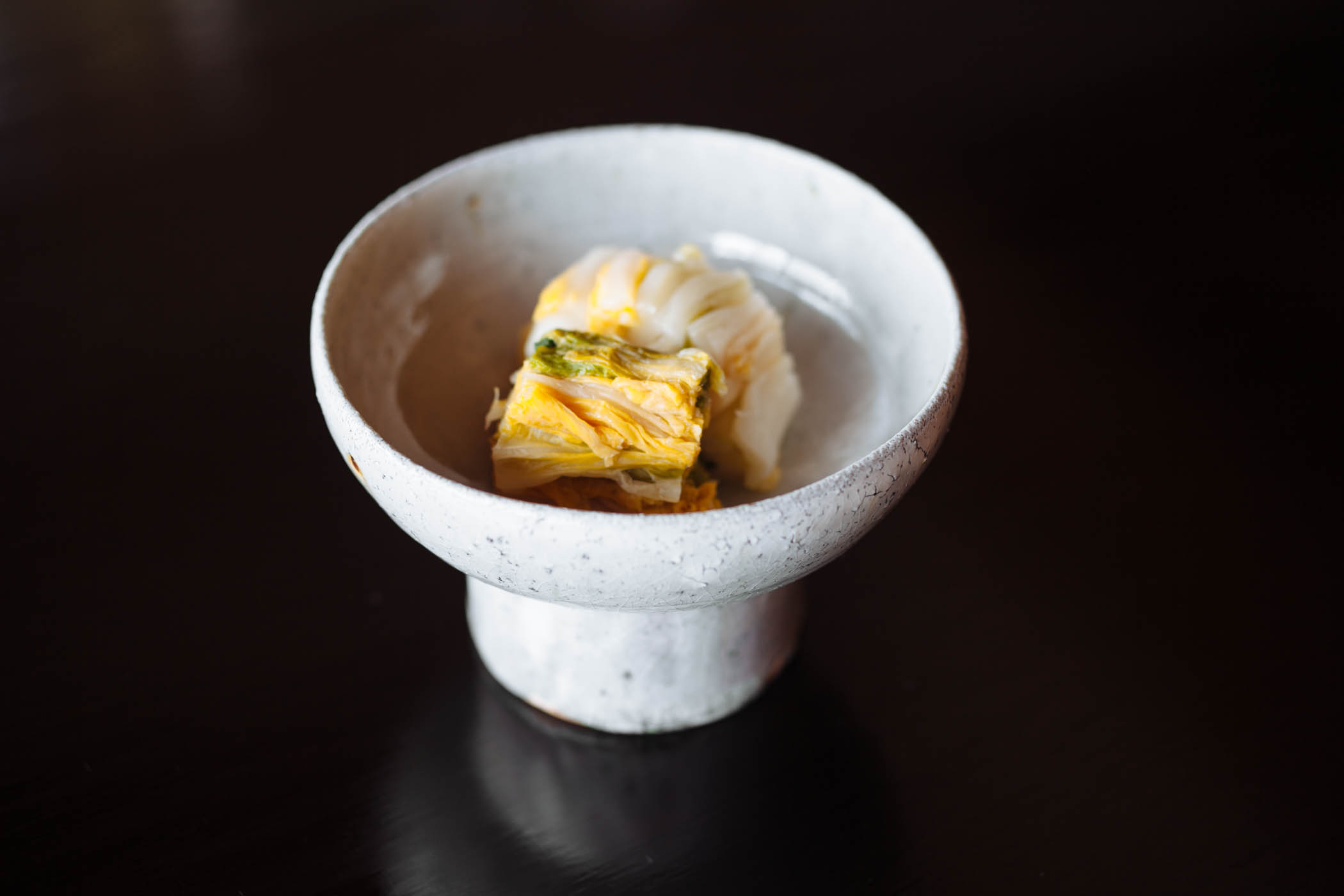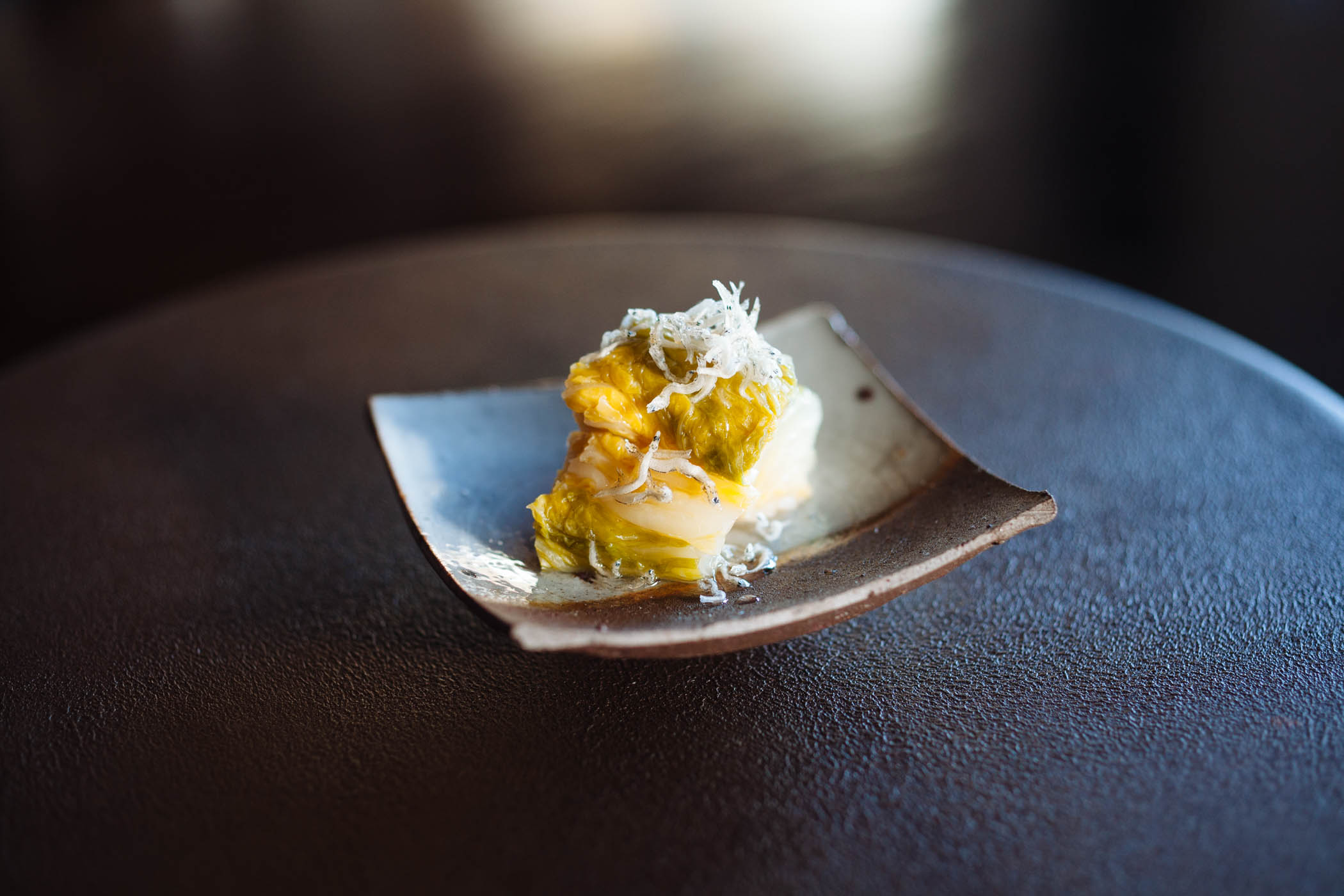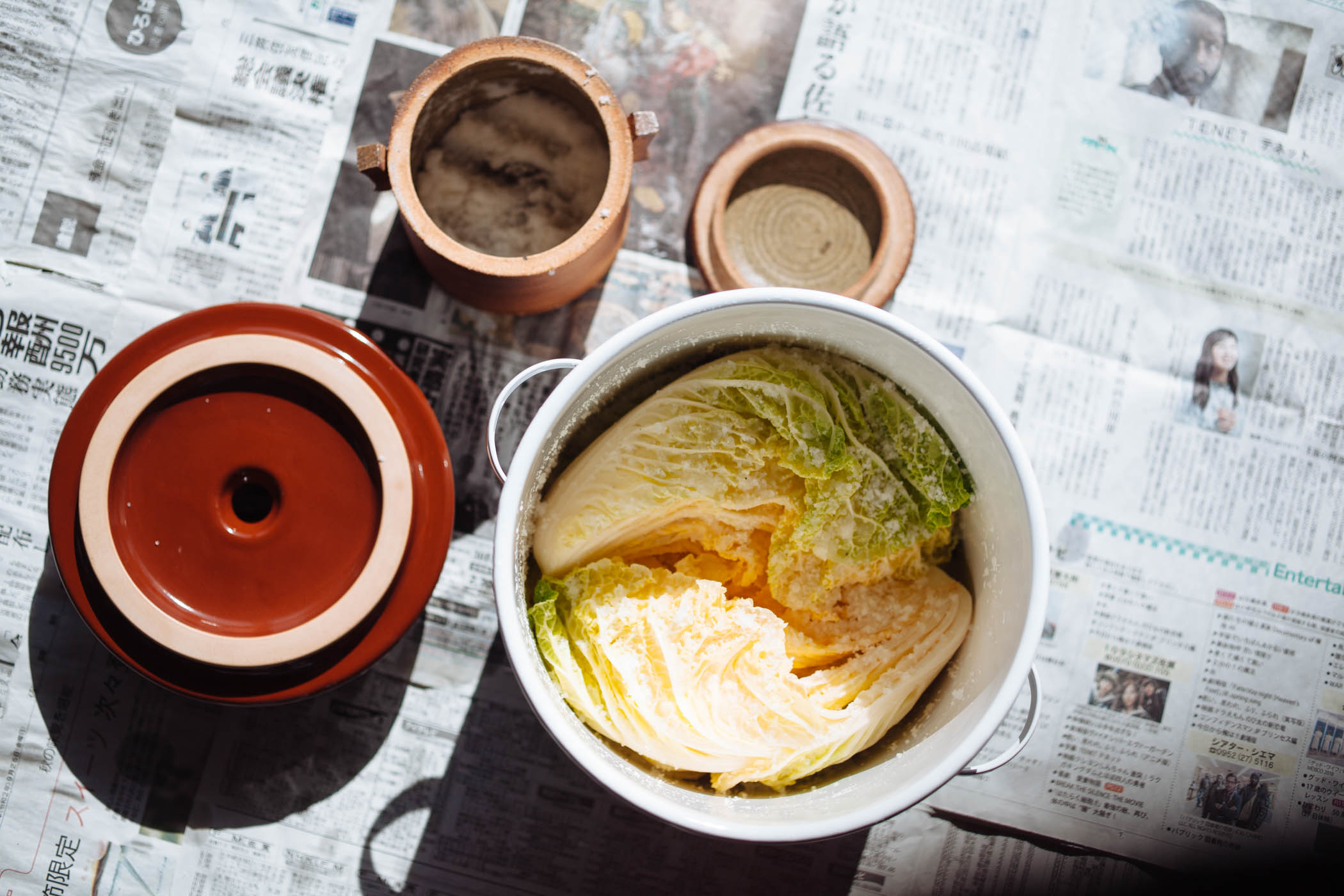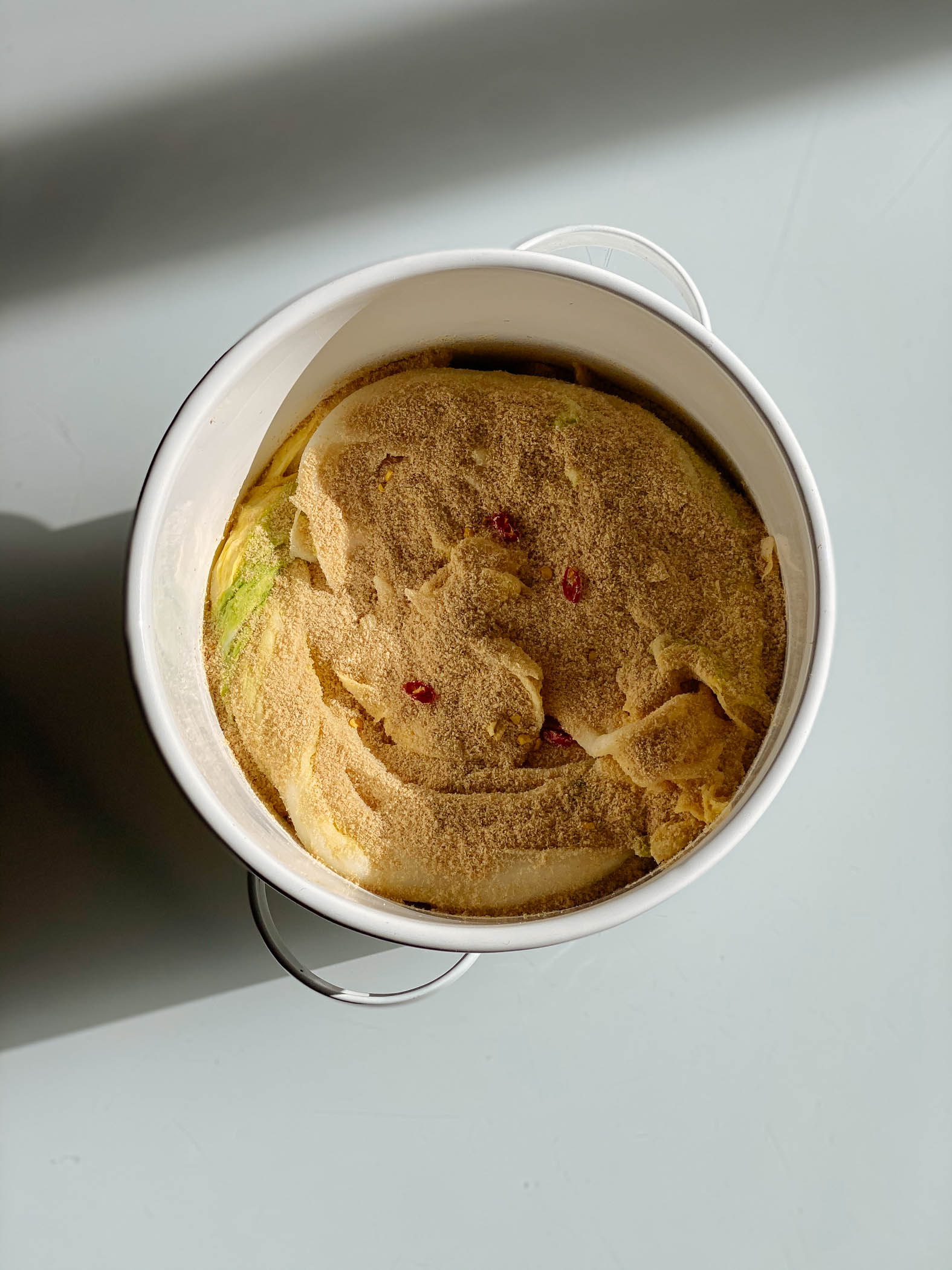The first snow and salted cabbage

Today the first snowflakes fell. We’ll never get a white Christmas here like the holidays of my childhood in Vermont, but still, celebrating Christmas is one of the few inherently Western customs I’ve firmly installed in our life in Japan. My New England roots kick in, I grab a saw and we head out to cut a Charley Brown tree at the beginning of December each year. Given the environs, it’s usually a cedar tree and that sets Hanako on a sneezing fit. We adorn it with lights and three distinct sets of ornaments. A collection of vintage embroidered temari found in my in-law’s attic hangs next to a set of old European style hand blown and hand painted glass ornaments that come from my family. One of those glass ornaments is in the shape of a pickle, likely a dill or mustard pickle, but it always reminds me of a cucumber pickled in a nukazuke pot, a personal favorite. The last ornaments to go on the tree are delicate snowflakes and stars made of bent straw tied with red thread, a set we bought early on when we started to celebrate Christmas together in Japan. I love the festivity of it all and though Christmas is a tradition I brought into this marriage, Hanako has come to love it too and it feels fitting that our ornaments bring together our two cultures and families.
I’ve always been drawn to tradition. I didn’t have many to hold onto growing up. And those I did, like Christmas, often felt more split than united. Christmas with my mom included decorating a wild and spindly tree cut from the forest with white lights and mostly handmade, heirloom ornaments while listening to the Mormon Tabernacle Choir’s rendition of Handel’s Messiah. Christmas with my father included decorating a farmed Christmas tree with colored lights, colorful glass globes, and silver tinsel while listening to the John Denver and the Muppets Christmas album. Tradition – that sense of shared history, a tie to ancestry and origins that gives one a sense of context and belonging – it’s a feeling I have been chasing my whole life.
So when I landed in Japan it’s only natural that I latched on to the food and to Kuniko’s cooking, the first thing I saw that offered a route towards belonging both to the family I had joined and the culture of the country I was in, a culture rife with references to something larger and more meaningful than the individual self. It was just this time of year in fact when I first arrived in Japan and I saw her making simple winter pickles by salting hakusai, big heads of Napa cabbage. Desperate to learn, I hovered at her elbow with pen and paper in hand, but there was barely anything to take note of. It requires no particular skill beyond roughly dividing a cabbage, then washing, drying and sprinkling a few handfuls of salt over the wedges.
Hakusai tsukemono has become one of my all time favorite Japanese pickles and a firm culinary tradition in our house. Every year, when I can find a fat, heavy, tightly headed cabbage for under 200 yen, I know it’s time for winter pickles. Pickles bring vegetables to the table at a time when few are to be found fresh. Napa cabbages sweeten in the cool Kyushu winter. In the time it takes to drink my morning tea, I section two heads of cabbage into wedges, rinse them, and set them outside to lightly dry in the sun for half a day. At lunch time I salt them and set them under weights where they’ll stay for three days. The fleshy leaves relax, give up their moisture, and grow supple in the brine. On another morning I wring them out and layer them with rice husk and dried chili pepper for a week or two. Optional additions like threads of dried kombu or slivers of yuzu peel add umami and fragrance. The pickles are in their prime for a week or so, salty and sour with a quiet spark of spice. The bite is somewhere between a snap and a tear, the fibers crisp and strong. In our home they are topped with a pinch of chirimenjako, dried whitefish which add bit of umami and a lovely crunch, a drizzle of clear sesame oil and a drop or two of soy. If we have shichimi on hand, Japan’s beloved seven spice blend, a dusting of that too.

Making hakusai shiozuke is the simplest of endeavors, really. You will find most recipes for salted cabbage filed in the category of asa-zuke or quick pickles, prepared in the morning and ready in the evening, and best consumed within a couple of days. Mine take a bit longer, are made in a bigger batch, and eaten over a longer period of time resulting in a somewhat more complex and matured flavor than quick pickles. But still, there is nothing complex or time consuming about making them, really. The task of waiting outweighs any actual physical exertion. It’s more about remembering when to do what, and learning what to look for and how to know when things are ready. But despite the relative ease, and despite the great reward from rather little investment, it’s one of innumerable disappearing culinary traditions. Today Japan is looking abroad and emulating a convenience culture that has plagued the West with obesity and disease. Pickles have gone the way of so many food items, from that which everyone’s grandmother once made at home to that which most people buy at the store, laced with colorants, unnecessary levels of sugar, and now ubiquitous preservatives.


Every generation embraces the new with enthusiasm in their youth and then watches the next generation do the same and laments the changes, laments what’s been rejected, replaced, ignored, forgotten and ultimately lost. I have adopted the customs and traditions of my 80+ year old in-laws that few practice anymore, and culturally they are not mine and so perhaps these are not my losses to lament. But I do. As an expat from a young, unhealthy country with barely a couple of centuries under its checkered belt of history, I lament that a culture with so much history, so much tradition, so much refinement, is thoughtlessly casting it aside. I have always longed for traditions like these to trace far back in my own familial or cultural lineage. And so I’m scrambling to preserve as much cabbage and food culture as possible while in the presence of such knowing guides.
